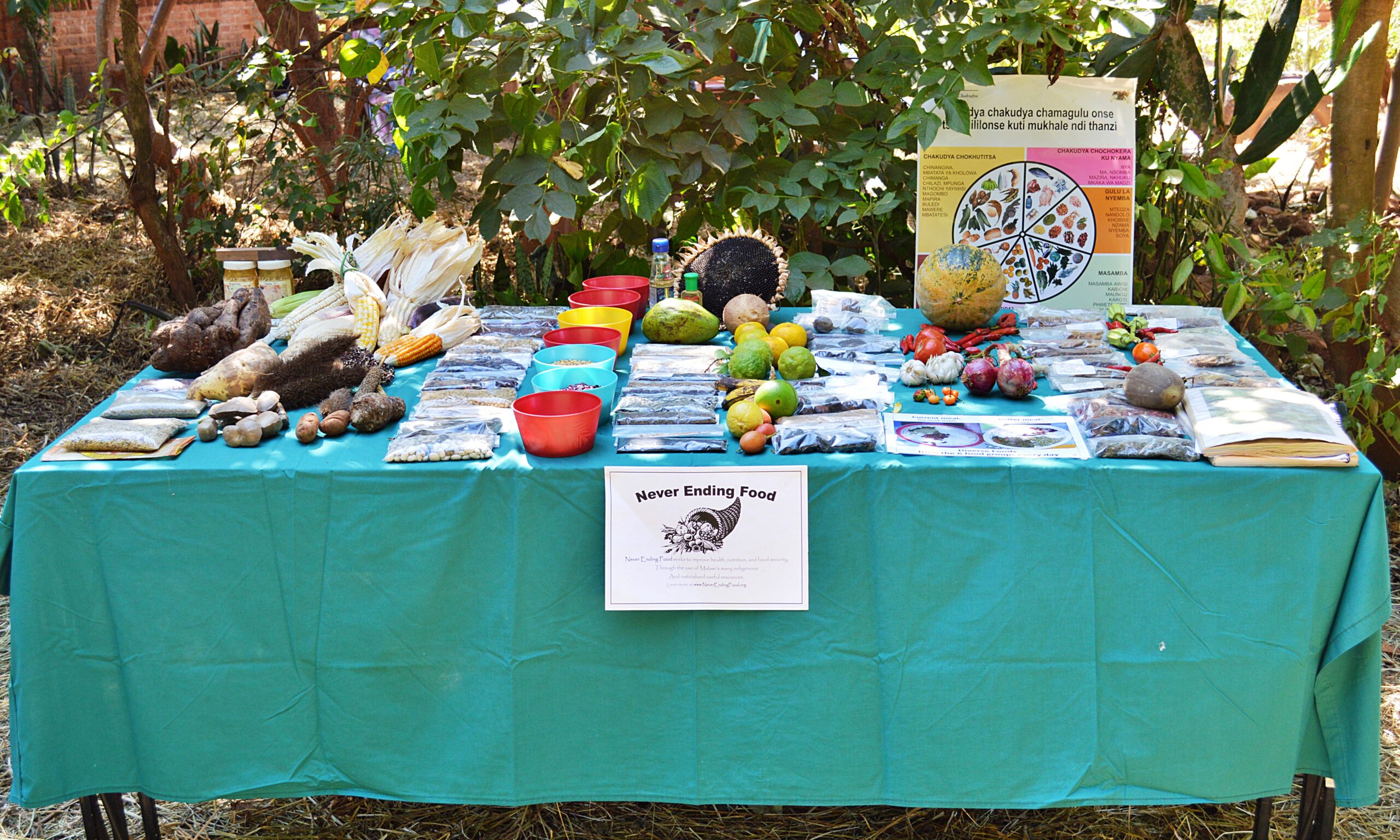
Up until 2001, Malawi taught a model for nutrition based upon 3 food groups. This included body ‘energy,’ ‘protection,’ and ‘building.’ Although the limited diet of maize-based nsima, a few beans and some greens fulfilled the 3-food group requirements, it didn’t fulfill the body’s requirements for healthy and balanced nutrition.
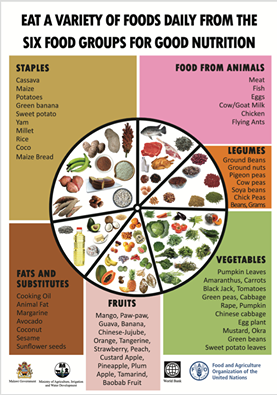
In 2001, in a move to promote better nutritional diversity, Malawi’s Ministry of Agriculture came out with a 6-food group model (with a 7th group including clean water). This model took the previous ‘energy’ group and broke it into ‘staples’ and ‘fats.’ It took the ‘protection’ group and turned it into ‘fruits’ and ‘vegetables.’ And, what used to be the ‘building’ group became ‘legumes and nuts’ and ‘animal foods.’
This model was launched by the Ministry of Agriculture complete with beautifully colored posters highlighting different foods in each food group. It had teaching materials for extension workers who wanted to highlight the differences between the food groups and the importance of nutritional diversity. It even came out in 3 different languages to help promote these messages throughout the different regions of the country. Unfortunately, it didn’t go out with much education for the people who would be using this model. This has led to a situation where now, almost 20 years later, we still sometimes hear of some teachers and health workers using the 3-food group model.
The challenge, however, lies not so much in the dissemination of proper agriculture, health, and educational messages, but rather in simply trying to get the country to follow its own guidelines. Here we find an incredible 6-food group model for improved health and nutrition in Malawi, and yet despite being launched by the Ministry of Agriculture, the vast majority of the nation’s agricultural policies remain focused primarily on the production of maize—one food, from one food group, providing one set of nutrients.
In 2018, it was estimated that nearly 2 million people in Malawi would be facing food insecurity due to erratic rainfall patterns which affected the production of maize. Despite these challenges, Never Ending Food still achieved diverse access to nutritious foods (including maize). This was due to intercropping, the planting of perennial crops, healing the soil, managing water, and ensuring that we were using the food group model for meeting our nutritional needs.
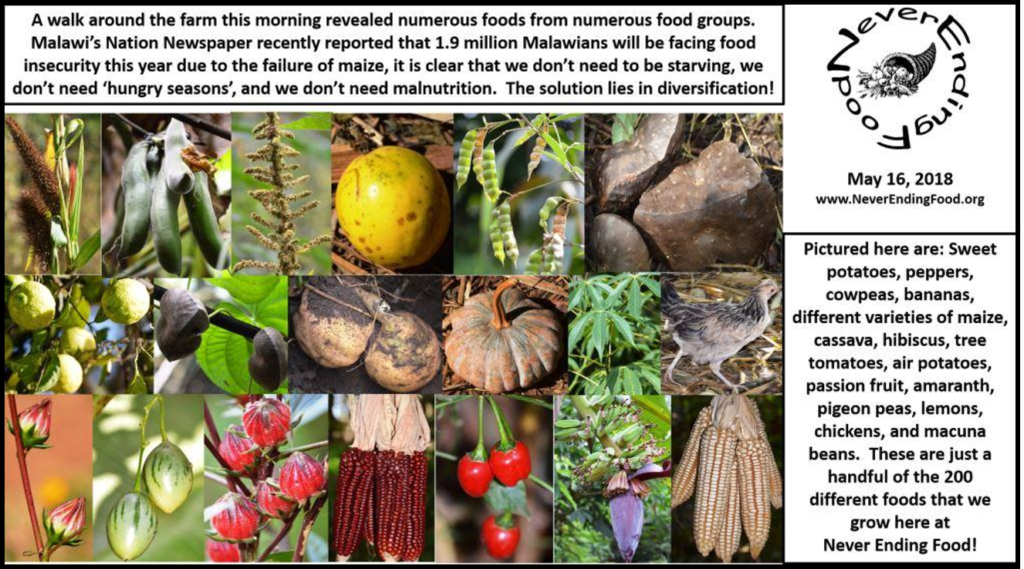
If we want to create a situation where people in Malawi—and throughout the world—have access to a diversity of highly-nutritious foods, then we need to start reflecting this reality within our systems of food production. As current agricultural approaches continue to fail nutritionally, nutrition is now being treated medicinally. Countries, like Malawi, often find themselves spending millions of dollars each year to subsidize the cultivation of maize, and then millions more on nutritional supplementation, fortification, and pharmaceutical programs.
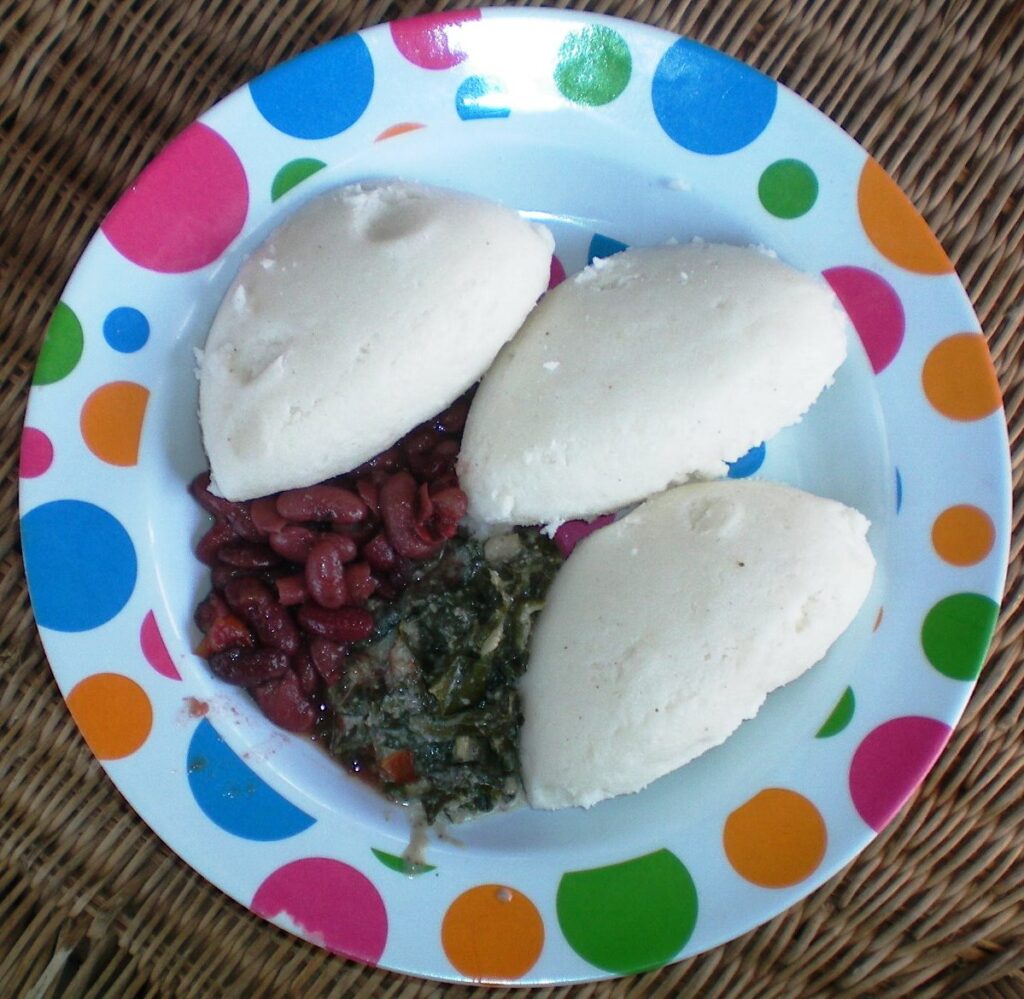
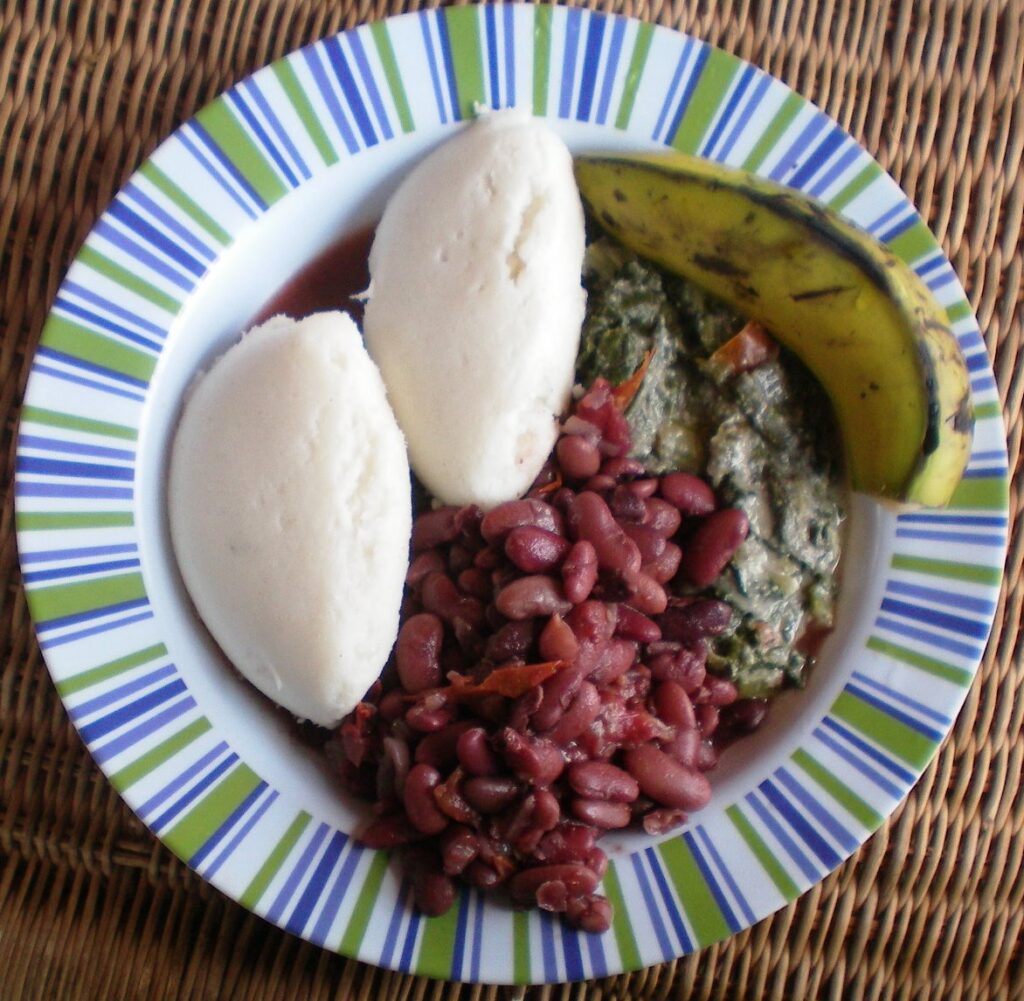
Solutions are readily available and, in a tropical country like Malawi, may easily be accessed throughout the year. This just takes a bit of planning, forward thinking, and design.
The activity below is from Appendix 2 of the Sustainable Nutrition Manual: Menu Planning Guide. It can be downloaded for free to help groups think through which foods they have available throughout the year. Have the participants choose a few foods from each of the food groups and determine when they are available for harvesting and eating. If there are gaps in any of the food groups, at any time of the year, try to think of locally-available resources which can fill these gaps.
We have used this activity with many groups, and we have yet to meet a group who hasn’t been able to come up with a year-round plan for access to foods that are seasonal and nutritious!
All donations go directly towards helping to spread Permaculture solutions throughout Malawi. Every little bit helps, and even a little can go a long way!
